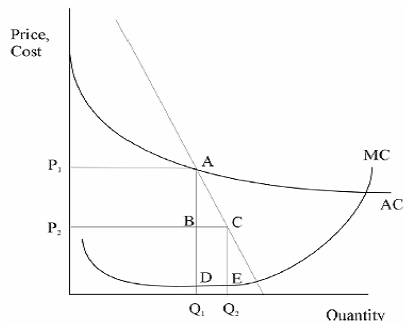Best Solutions for Utility Pricing:
a) Ramsey prices: attempt to maximize social welfare subject to full-cost recovery, through the use of inverse elasticity rule, i.e. charging consumers with inelastic demands a higher price relative to consumers with elastic demands. The use of Ramsey pricing may lead to problems of equity with unequal charges.
b) Nonlinear pricing: refers to any case in which the tariff is not strictly proportional to the quantity purchased. Consumers act as price takers, given pricing schedules: If offered a menu (series) of prices and corresponding quantities, each consumer chooses a preferred quantity and pays the associated charge. In this regard see Figure.

Increasingly this 'block rate pricing' method is being adopted by the public utilities to address the environmental conservation needs. Blocks increases as consumption level increases. Initial blocks are set with lower prices to provide a basic level of service to low income households. Design of the blocks is ad-hoc; determination of blocks frequently involves interest group rent-seeking. Moreover, concerns about cost recovery remain when conservation rates are adopted.